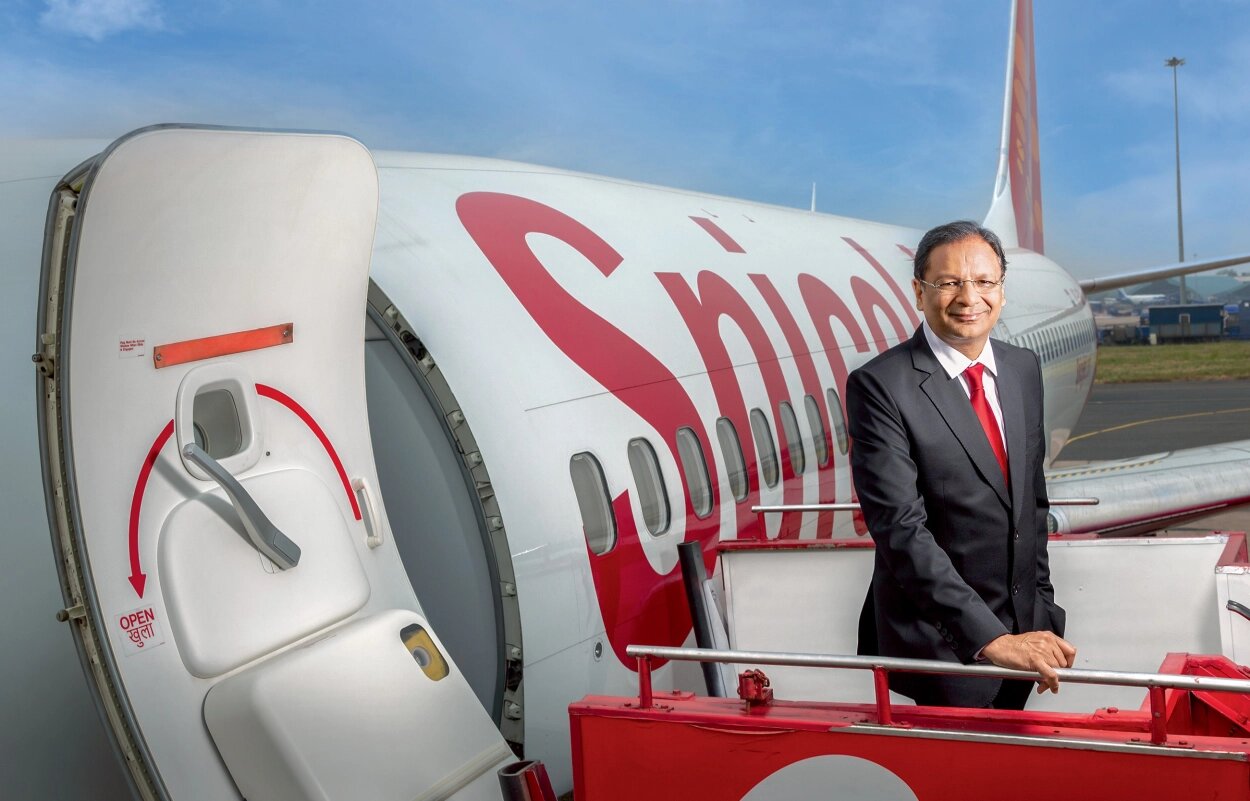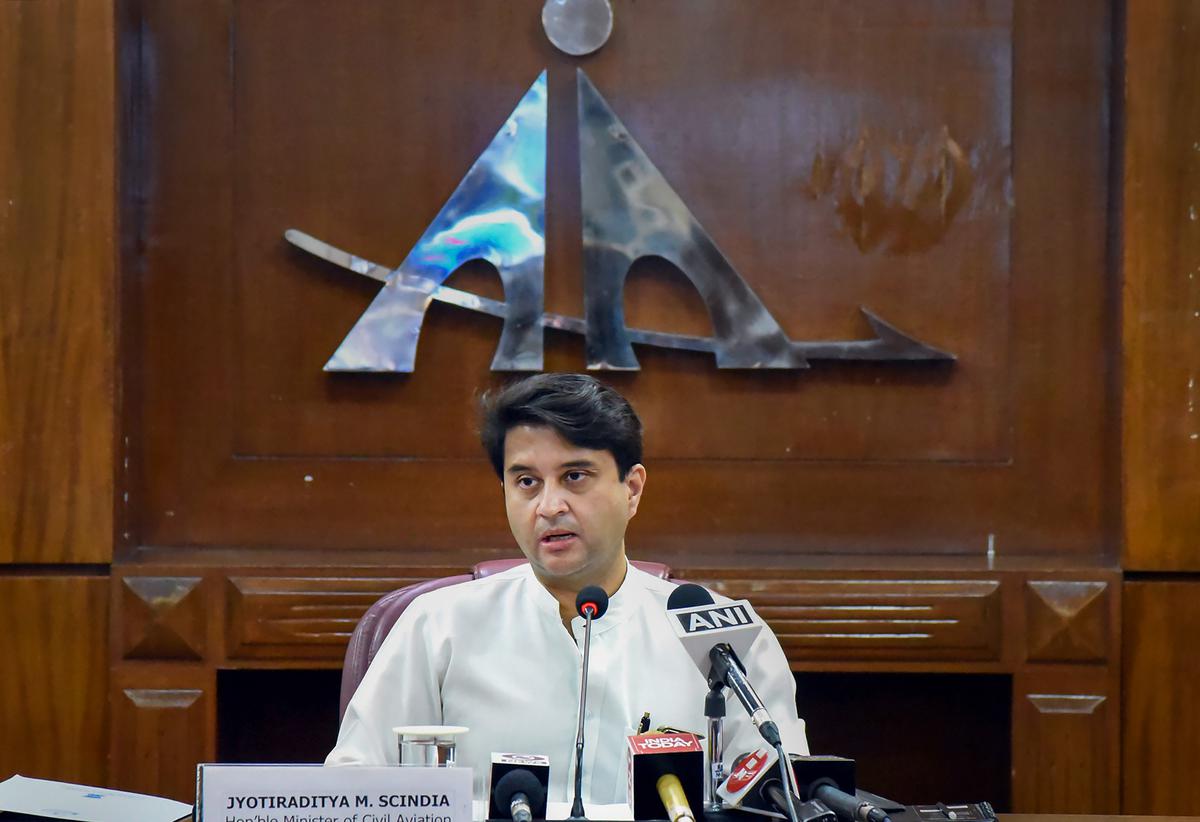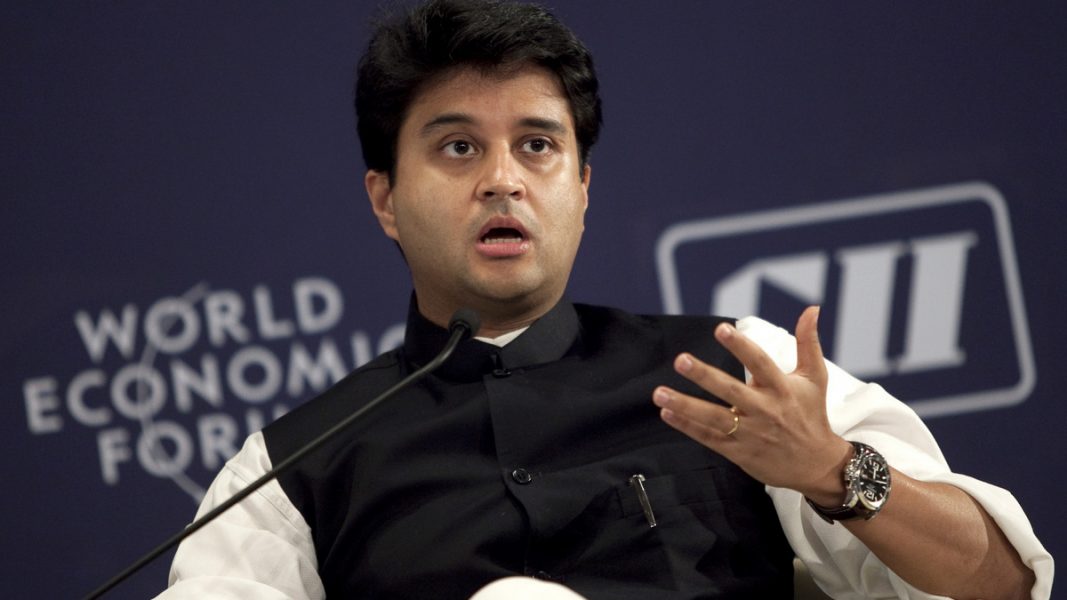Spicejet looking for a "knight in shining armour" to help with financial distress
Radhika Bansal
24 Aug 2022

Financially troubled Indian carrier SpiceJet Ltd. is open to investment from external parties, including other airlines, as it seeks to raise INR 2000 crore (USD 250 million), Chairman Ajay Singh told reporters in New Delhi on Tuesday, August 23.
Mr Singh declined to say what other carriers SpiceJet may be in discussions with but indicated an equity stake sale may be one option.
The shareholders of SpiceJet, which is a listed company, have approved fundraising of INR 1,500 to INR 2,000 crore, and some of the amounts have already been raised, Mr Singh said.
Spicejet looking for a "knight in shining armour" to help with financial distress
ALSO READ - SpiceJet in active discussion with a Middle Eastern carrier for a possible stake sale
The airline had earlier this month said it was “in discussions with various investors (including a Middle East carrier and an Indian conglomerate) to secure sustainable financing.”
SpiceJet's financial health worsened after Covid decimated air travel globally. The airline has suffered three straight years of losses while its market share has plunged to fifth from second largest.
In late 2021, the airline had cash and cash equivalents of just INR 72.9 crore compared with total debt of INR 9,750 crore.
ALSO READ - Amidst ongoing court cases, SpiceJet posts net profit for Q3
The shareholders of SpiceJet, which is a listed company, have approved fundraising of INR 1,500 to INR 2,000 crore, and some of the amounts have already been raised.
In the October-December quarter of FY22, the airline had reported a net profit of INR 23.28 crore, as against a loss of INR 57 crore in the corresponding quarter of the previous fiscal. The revenue climbed to INR 2,259 crore, marking a jump of 34% as against INR 1,686 crore clocked in the preceding quarter.
ALSO READ - DGCA orders SpiceJet to operate only 50% of approved flights
In addition to a deteriorating balance sheet, SpiceJet is under scrutiny from authorities for reporting several mid-air malfunctions. The incidents have prompted India's aviation regulator to restrict the number of seats SpiceJet can sell at 50% for eight weeks.
The budget carrier is also tapping a government program that extends emergency credit lines to businesses hit by the pandemic, Singh said.
In 2015, Ajay Singh said the airline had been approached by foreign carriers seeking to purchase a stake.
ALSO READ - Cash-strapped SpiceJet plans to take delivery of 7 Boeing 737 Max
The no-frills airline currently has 60 operational aircraft and is also expecting Boeing to resume delivery of the 737 Max aircraft in October. The company will also raise capital via the sale and leaseback of at least seven additional Boeing Co. 737 Max aircraft this year, he said.
"SpiceJet is doing its utmost to work through the stress we have faced," Mr Singh said. "We will do everything in our power to make sure SpiceJet remains a strong player."
It's not the first time SpiceJet has flagged third-party interest. In 2019, Mr Singh said SpiceJet had received several proposals to buy into the company but was only willing to evaluate those that were strategic. And in 2015, Ajay Singh said the airline had been approached by foreign carriers seeking to purchase a stake.
In late 2021, the airline had cash and cash equivalents of just INR 72.9 crore compared with total debt of INR 9,750 crore.
Meanwhile, SpiceJet has also been trying to monetise its freighter business, SpiceXpress. People aware of the development said that while shareholders had approved the plan, the airline was yet to receive clearance from creditors to separate the business.
Recently, three Indian banks internally categorised loans to SpiceJet as being at "high risk" though the airline has not defaulted.
IDFC First Bank, Yes Bank and Indian Bank are concerned about SpiceJet's cash flows and have held talks with the carrier seeking assurances as it has been behind on payments to some aircraft lessors.
SpiceJet has also applied for INR 280 crore loans under the Emergency Credit Line Guarantee Scheme.
Singh holds around 60% of the airline, of which 44.24% is pledged with lenders. Based on its Tuesday, August 23 closing share price of INR 46.25 on the BSE, SpiceJet's market cap was INR 2,783 crore.
SpiceJet has also applied for INR 280 crore loans under the Emergency Credit Line Guarantee Scheme.
The SpiceJet board is scheduled to meet on August 31 to consider and approve the financial results for the fourth quarter of FY22 and the first quarter of this fiscal, according to a regulatory filing.
"This is to inform you that meeting of the board of directors of the company will be held on Wednesday, the 31st day of August, 2022, inter-alia, to consider and approve: The audited standalone and consolidated financial results of the Company for the fourth quarter and financial year ended March 31, 2022; and the unaudited standalone and consolidated financial results for the first quarter ended June 30, 2022.The trading window for dealing in securities of the company shall remain closed for the designated persons till September 2, 2022, in view of the declaration of quarterly results."SpiceJet to Stock Exchanges
ALSO READ - SpiceJet under attack by ransomware; morning flights affected
SpiceJet has drawn questions over the inordinate delay in the release of Q4 FY22 results. The company had, on May 27, said a ransomware attack on IT systems has affected its audit process, and due to this, the results have been delayed.
Read next
Civil Aviation Minister Jyotiraditya Scindia said on Tuesday, August 23 that India needed to develop an airport which would be a global hub for international flights.
More wide-body aircraft, anchor airlines at particular airports as well as synergy between domestic and international departures are required to have an international aviation hub in India.
ALSO READ - Scindia wants Indian carriers to buy more widebodied aircraft
An international aviation hub or a hub airport is the name given to an airport that airlines use outside their headquarters to concentrate passenger traffic and flight operations. Hubs are used as a transfer point to get passengers to their final destination.
The country's civil aviation sector is on the recovery path after being hit hard by the coronavirus pandemic.
The more places a hub airport provides access to, the higher the flight frequency at the hub which also leads to a higher footfall of passengers.
For that to happen, many things need to come together. There should be anchor airlines at a particular airport. Their fleet must consist of wide-bodied aircraft to transfer passengers internationally.
Also, there should be synergy between domestic and international departures. So taking one or two airports and creating a model of these, would be the first step. It's a work in progress.
Indian aviation is in the growth stage as it approaches maturity.
Some airports such as Delhi’s Indira Gandhi International Airport had cumbersome transfers between domestic and international terminals which airlines had flagged as a roadblock to developing an airport as a hub.
ALSO READ - Scindia expects air passenger traffic to reach 40 crores by FY24
"We had 140 million domestic travelers and 60 million international travelers pre-Covid in 2020. That is 200 million, which is expected to go to 400 million travelers in the future so there's an opportunity beckoning at our door to make sure that we have an International hub here in India."Jyotiraditya ScindiaScindia wants Indian carriers to buy more widebodied aircraft
Several countries that boast of hub airports, also have anchor airlines that bring a large chunk of traffic to them such as the United Arab Emirates two flag carriers Emirates and Etihad which bring traffic to Dubai and Abu Dhabi respectively, or Turkey’s Turkish Airlines.
India is also projected to have a total of 220 airports including several heliports and aerodromes by 2026. The country's civil aviation sector is on the recovery path after being hit by the coronavirus pandemic.
Read next
Aviation and defence ministries to work parallelly for civil and defence aerospace industries
Jinen Gada
24 Aug 2022

The Ministry of Civil Aviation is engaging with the Ministry of Defense for greater convergence between civil and defence aerospace industries including making available business accrued through defence offsets to civilian maintenance, repair and overhaul or MRO sector.
Convergence between civil and defence aerospace industries is a norm globally and offshoots from one directly affect the other.
In talks with defence ministry for convergence between civil and defence aerospace industries: Scindia.
This could be very beneficial, as under the defence offset obligations, foreign vendors who secure defence contracts from India worth Rs 2,000 crore or more need to plough back a minimum of 30% of the contract value through investments back into the Indian defence industry. Such investments could be through orders, transfer of technology and investments in research and development.
ALSO READ - Safran to establish an MRO facility worth USD 150 million in Hyderabad
In July, French aerospace and defence multinational company Safran inaugurated three new production plants in India and announced the setting up of a new engine MRO facility, which will start operations by 2025, with a total investment of more than USD 200 million.
ALSO READ - Safran to set up a MRO facility for LEAP commercial aircraft engines in India
GST has a big impact on the MRO industry.
The investments included a new facility for Safran HAL Aircraft Engines, a 50/50 joint venture between Safran Aircraft Engines and government-owned defence public sector company Hindustan Aeronautics Ltd in Bengaluru.
ALSO READ - HAL estimates Safran MoU to generate USD 1 billion revenue in next 5 years
The 36 Dassault Rafale fighter aircraft acquired by India recently run on engines developed by Safran.
Industry experts also said that though India is sufficient in civil aircraft airframe MRO business, but is lacking in aircraft component (engine) MRO business.
"More than 65% of the total maintenance expenditure of an airline is focused on engines and developing an engine MRO business requires investment into land, facility equipment, and tooling."Ashmita Sethi, President and Country Head, Pratt & Whitney
With inputs from ET.
Read next
Tata Sons likely to merge the losses of AirAsia India with Air India before the possible merger
Radhika Bansal
24 Aug 2022
Tata Sons will likely have to make a provision of INR 2,600 crore as accumulated losses for AirAsia India, which it proposes to absorb into Air India and merge with no-frills unit Air India Express, said people with knowledge of the matter.
An auditor's report has cast doubt on AirAsia India as a "going concern," stating that its net worth has been fully eroded and its liabilities exceed current assets.
AirAsia India was launched in 2014 as a joint venture between the Tata Group and AirAsia Investment Limited. The Tatas began with a 51% equity share in the company, which was further raised to 83.67% in 2020.
Tata Sons likely to merge the losses of AirAsia India with Air India before the possible merger
ALSO READ - Air India gets CCI’s approval to acquire the entire stake in AirAsia India
Tata-owned Air India proposes to acquire 100% of AirAsia India and has sought the Competition Commission of India's approval. Tata Sons owns 83.67% of the no-frills carrier and the remaining 16.33% is held by AirAsia Investment Ltd, part of Malaysia's AirAsia Group. Concept of 'Going Concern' AirAsia India, which was already reeling under losses, was badly hit by the pandemic, officials said.
Tata Sons did not comment. Officials close to the development said that no decision has been taken on whether the write-off will be included in the balance sheet of Tata Sons or Air India.
"In mergers between two group companies - AirAsia India with Air India Express - if one of the group companies' liabilities exceeds its assets, the group has to make provisions for impairment in the value of investments if it's permanent, as per applicable accounting standards. In the case of the AirAsia India merger, additional impairment provisions, if any, will be restricted to the extent of the impairment provisions not already accounted for in the latest reported standalone financial statements of Tata Sons." Uday Ved, Partner at Global Tax Practice Group - KNAV
Air India is a full-service airline operating in the domestic and international markets. Air India Express focuses on short-haul international operations, especially to the Middle East from south India and elsewhere. Tata Group has started work on the merger of AirAsia India with Air India Express, said top executives close to the development.
"The 'going concern' concept is a key assumption under generally accepted accounting principles and it describes a business that is expected to operate for the foreseeable future. A company needs to have a concrete plan to improve business outlook and mitigate the going concern assumption when it is in an adverse situation."Paras Savla, Partner at Boutique Audit and Consulting Firm - KPB & Associates
AirAsia India has had a rough couple of years due to the pandemic, with its loss increasing by 42% on a year-on-year basis to almost USD 275 million. Its revenue grew by nearly 39% to USD 238 million, but a 67% hike in aviation turbine fuel and a weakening Indian rupee against the US dollar impacted the overall numbers.
ALSO READ - AirAsia India records elevated losses in FY22
AirAsia India has had a rough couple of years due to the pandemic, with its loss increasing by 42% on a year-on-year basis to almost USD 275 million.
Last year, AirAsia India posted an annual loss of USD 193 million, almost double the previous year, and a revenue of USD 171 million. It has been shrinking its operations and returned seven Airbus A320 planes to AirAsia Berhad and currently has a fleet of 26 A320s.
Autos-to-steel conglomerate Tata bought state-run carrier Air India in a USD 2.4 billion equity and debt deal earlier this year, regaining ownership of what used to be India's flagship carrier after nearly 70 years.
The deal included three entities - full-service carrier Air India, its low-cost arm Air India Express, and AI SATS, which provides ground-handling and cargo services.
(With Inputs from The Economic Times)
Read next
Qatar Airways becomes the global airline partner of the Ironman triathlon series
Radhika Bansal
23 Aug 2022

Qatar Airways and Ironman have entered a long-term global partnership, making Qatar Airways the airline partner of the Global Ironman series and Ironman 70.3 series through the 2025 season.
In addition, Qatar Airways will be the title partner of the 2022 editions of Ironman 70.3 Sunshine Coast, Ironman Maryland, Ironman 70.3 Washington and Ironman 70.3 Western Sydney triathlons and will connect athletes, officials, and fans via Brisbane Airport, Washington Dulles International Airport, Seattle-Tacoma International Airport, and Sydney Airport, respectively.
https://twitter.com/qatarairways/status/1561662433688682496
Qatar Tourism will also be promoted to athletes and spectators across the global Ironman series as part of the partnership.
As part of the partnership, athletes travelling to Ironman or Ironman 70.3 events using Qatar Airways will have access to a range of benefits, such as promotional fares for themselves and family members, and for those travelling to or via Qatar, additional special offers to Doha attractions are also included.
“Our partnership with The Ironman Group is a natural fit for our brand, where human endeavour proves that anything is possible. We admire the relentless effort and dedication of the athletes, attributes we strive to reflect in the way we serve our customers. Ironman races are hosted in different cities across the world, making our global network the perfect medium through which to connect endurance sports enthusiasts, athletes, supporters, and officials.”Akbar al-Baker, Qatar Airways Group Chief Executive and Qatar Tourism Chairman
Furthermore, athletes who have completed an Ironman or an Ironman 70.3 event within the last 12 months will also be eligible for other unique benefits.
“Providing our athletes with an unmatched race experience is at the core of what we do, so we’re thrilled to partner with an airline that reflects our customer centric approach and is committed to the highest standards in everything they do. Our Ironman events have long brought together different communities and cultures through their love of endurance sport, so how better to continue doing this than with the world’s fastest growing airline. This is the beginning of an exciting partnership for both of us, our athletes, and future athletes and supporters who we hope to welcome at an event in the near future.”Andrew Messick, President and Chief Executive Officer for The Ironman Group
The partnership was marked at the 3-2-1 Qatar Olympic and Sports Museum in Doha, Qatar. Along with leadership from both organisations, Lulwa al-Marri – the first Qatari female athlete to complete a full-distance Ironman race, was in attendance. For several years, many Qatari athletes have participated in and completed different Ironman triathlons across the world.
Ironman triathlons are a series of full-distance races composed of a 2.4-mile swim, a 112-mile bicycle ride, and a 26.2-mile run, in that order.
Since its debut in 1978, Ironman events have become globally known for being the world’s most challenging single-day sporting competitions. Ironman triathlons are a series of full-distance races composed of a 2.4-mile swim, a 112-mile bicycle ride, and a 26.2-mile run, in that order.
Similar to the Ironman triathlons, the Ironman 70.3 triathlons maintain the structure and format of the original triathlon series but with half of each distance, featuring a 1.2-mile swim, 56-mile bike, and 13.1-mile run.
Qatar Airways currently flies to more than 150 destinations worldwide.
Qatar Airways currently flies to more than 150 destinations worldwide. The airline continues to stand alone at the top of the industry having won the main prize for an unprecedented sixth time (2011, 2012, 2015, 2017, 2019 and 2021).
The airline’s hub, Hamad International Airport (HIA), was also recently recognised as the ‘Best Airport in the World 2021’, ranking at number one in the Skytrax World Airport Awards 2021.
Read next
India close to procuring the $3 Billion "Predator" Drones Deal With US | Here's what we know
Prashant-prabhakar
23 Aug 2022
In a military negotiation which was earlier put on hold, India is now said to be in advanced stages of the same discussion over the procurement of 30 MQ-9B Predator armed drones at a cost of over USD 3 billion to crank up its overall surveillance apparatus along the Line of Actual Control (LAC) with China and in the Indian Ocean.
Verifiable sources from the defence establishment have said that talks between New Delhi and Washington are underway for the government-to-government procurement of the drones manufactured by US defence major General Atomics, and rubbished reports stating they were off the table.
We understand that the MQ-9B acquisition programme is at an advanced stage of discussion between the US and Indian governments. Any questions on those discussions should be addressed specifically to the respective governments. From a company perspective, General Atomics is ready to support India and values our long-time relationshipDr Vivek Lall, the Chief Executive for the General Atomics Global Corporation
Dr. Vivek Lall | The Economic Times
The General Atomics MQ-9 Predator
Public App
Developed by General Atomics Aeronautical Systems (GA-ASI) primarily for the United States Air Force (USAF), the General Atomics MQ-9 Reaper (also called the Predator B) is an unmanned aerial vehicle (UAV) capable of remotely controlled or autonomous flight operations.
The MQ-9 and other UAVs are referred to as Remotely Piloted Vehicles/Aircraft (RPV/RPA) by the USAF to indicate their human ground controllers and are the first hunter-killer UAV designed for long-endurance, high-altitude surveillance.
The MQ-9 is a larger, heavier, and more capable aircraft than the earlier General Atomics MQ-1 Predator and can be controlled by the same ground systems used to control MQ-1s.
MQ-1 Predator | defensenews
The Reaper is designed to carry 15 times more ordnance payload and cruise at about three times the speed of the MQ-1. The aircraft is monitored and controlled by aircrew in the Ground Control Station (GCS), including weapons employment.
The Predator and Reaper were designed for military operations and not intended to operate among crowded airline traffic. The aircraft typically lack systems capable of complying with FAA See-And-Avoid regulations.
Specifications (MQ-9A)
Length6 ft 1 inWingspan65 ft 7 inHeight12 ft 6 in Max takeoff weight10,494 lb Cruise speed194 mphRange1,200 mi Endurance14 hours fully loadedOperational altitude25,000 ftWikipedia
Our Indian customer has been impressed by the MQ-9's over-the-horizon ISR- intelligence, surveillance and reconnaissance, support for surface units and Indian warships, as well as the exceptional endurance and operational availability of the platformLall said
According to General Motors, the MQ-9Bs are designed to not only meet the standards of NATO but also to comply with civil airspace requirements in the US and around the world.
Reportedly. the procurement proposal has been moved by the Indian Navy and all three services are likely to get 10 drones each.
SOURCE(s)
COVER: General Atomics Aeronautical Systems




Comment